This week’s readings focus on innovative techniques for teaching history, emphasizing students’ (lack of) ability to critically evaluate primary and secondary sources. Sam Wineburg’s piece “Thinking Like a Historian” sets the stage for the rest of the readings, exploring the reasons for that lack of interest and ability in performing historical study. Often, this stems from prior emphasis on memorization of facts and dates rather than thinking. Students can’t begin to imagine that doing history actually involves critical thinking, discovery, and uncertainty, because their only exposure to the field involves regurgitating bullet points.
Wineburg and Daisy Martin explore how the site Historical Thinking Matters guides students through modules on a certain event in history, while teaching them to critically interpret primary sources from various sides of the issue. The site not only tells students about the importance of sourcing, contextualizing, close reading, using background knowledge, etc., it actually shows historians thinking out loud as they encounter a new document. By showing rather than simply telling, the site allows students to understand how history is done.
When I went through the HTM module on the Scopes trial as part of the practicum, I felt that the site was very effective. It definitely deepened my understanding of the various viewpoints involved in the trial. I really liked how the first page of the module provided background for the event. Then I was able to see an example of a historian working through a document, which I was then encouraged to do with the rest of the series of primary sources. I liked that each primary source came with a brief introduction and questions which could be revealed after analyzing the source on your own. I also liked how the overall question or thesis of the module asked the student to complicate or problematize the notion that the Scopes trial was simply a battle between creationists and evolutionists. As the rest of the readings showed, one of the most difficult obstacles students face when learning history is understanding that ambiguity and uncertainty are often history’s results. After spending years reading from what seem like authoritative textbooks, it is quite difficult for students to understand that history is not about find the answer.
Mills Kelly certainly brought innovative history teaching to a new level with his course “Lying About the Past.” I was fascinated by Kelly’s description of his course and the fallout it caused in the scholarly community. It was shocking that a course which was able to teach students real research skills and the highly important ability to detect unreliable sources would end up being so vilified. Although the students did produce a few hoaxes online, they were careful to reveal the hoax fairly quickly; in fact, the public revelation of the hoax was a chance for those who hadn’t taken the course to sharpen their critical thinking skills by learning to question what they read on the internet (or anywhere else). That Kelly was banned from Wikipedia and treated like a criminal by many in the scholarly community actually serves to prove his point about jumping to conclusions without weighing all of the facts of the situation. I think if the people attacking Kelly with such vitriol had actually understood his goals and the success of his students, they would have moderated their views. It’s a shame that someone who took the lead in truly innovating history teaching ended up being pilloried rather than emulated or praised, especially in light of the difficulties of getting students truly involved in critical history work.
My lesson for this week’s practicum is inspired by the case studies in “Ways of Seeing: Evidence and Learning in the History Classroom”. I particularly latched onto Jaffee’s, Felton’s, and Wies’s explorations of how students’ ability to analyze primary sources seems to evaporate when they are faced with images. As an art historian, I found this particularly worrisome, but also not especially surprising, as historians often ignore their counterparts in the art history field (there, I said it!). Why these professors did not consult with their colleagues in art history was puzzling, to be honest. While it’s true that art historians often have the same issues when trying to get students to analyze artworks, clearly they have more ironed-out techniques for getting students to think about images. Even the introductory chapter in the survey textbook Gardner’s Art through the Ages gives an overview of how students should be prompted to think about art, with questions like “how old is it?”, “what is its style?”, “what is its subject?”, “who made it?” and “who paid for it?”. It also directs students to think about various types of evidence: documentary, visual, stylistic, physical.
I have never made a lesson plan before, but my idea centers around images of leadership and power. I would split students into groups and assign each group an image of a leader chosen from various time periods. Examples could include the Egyptian pharaoh Menkaure, the Roman emperor Augustus, Justinian, Louis XIV, Medici Pope Leo X, and George Washington.
- George Washington
- Louis XIV
- Menkaure
- Augustus
- Leo X
- Justinian
I would give the students some background information on each leader and society. I would then ask students to prepare a short PowerPoint or Prezi presentation, using the image as its main focus and using comparison images if necessary. In the presentation they would have to answer how the image communicates the leader’s power, leadership style, type of government, etc. The students would need to point to specific elements such as material, audience, style, location of the image (if known), accessories, dress, expression, other figures, etc. They would also present further background information they had researched in order to substantiate their claims. Further background might include textual primary sources or secondary sources. The goal of the lesson would be to show how images of power are constructed, and would hopefully teach students to question the imagery they see in their everyday lives.

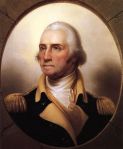
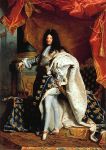

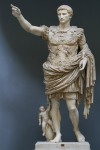
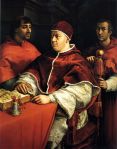
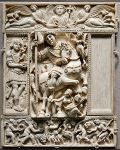

I’m glad you called historians out about ignoring Art History. Not because I study Art History but because I feel like my lack of experience in analyzing visual sources could be enhanced by taking an Art History class or at least listening to their expertise on the matter. Also, I like the idea of your lesson plan. I would also be curious to hear how you would analyze each image of leadership and power.
Ouch! I think you do raise a fair point that historians tend to skip over images in our analysis. I really liked your lesson, and how it differs from some of the history lessons in other blogs (including mine, which admittedly doesn’t include images). I’d also be curious if your analysis of leaders’ images includes any differences/trends between religious leaders and political leaders when applicable.
Sorry for the snark! I think we could all use some more interdisciplinary awareness in the humanities. 🙂